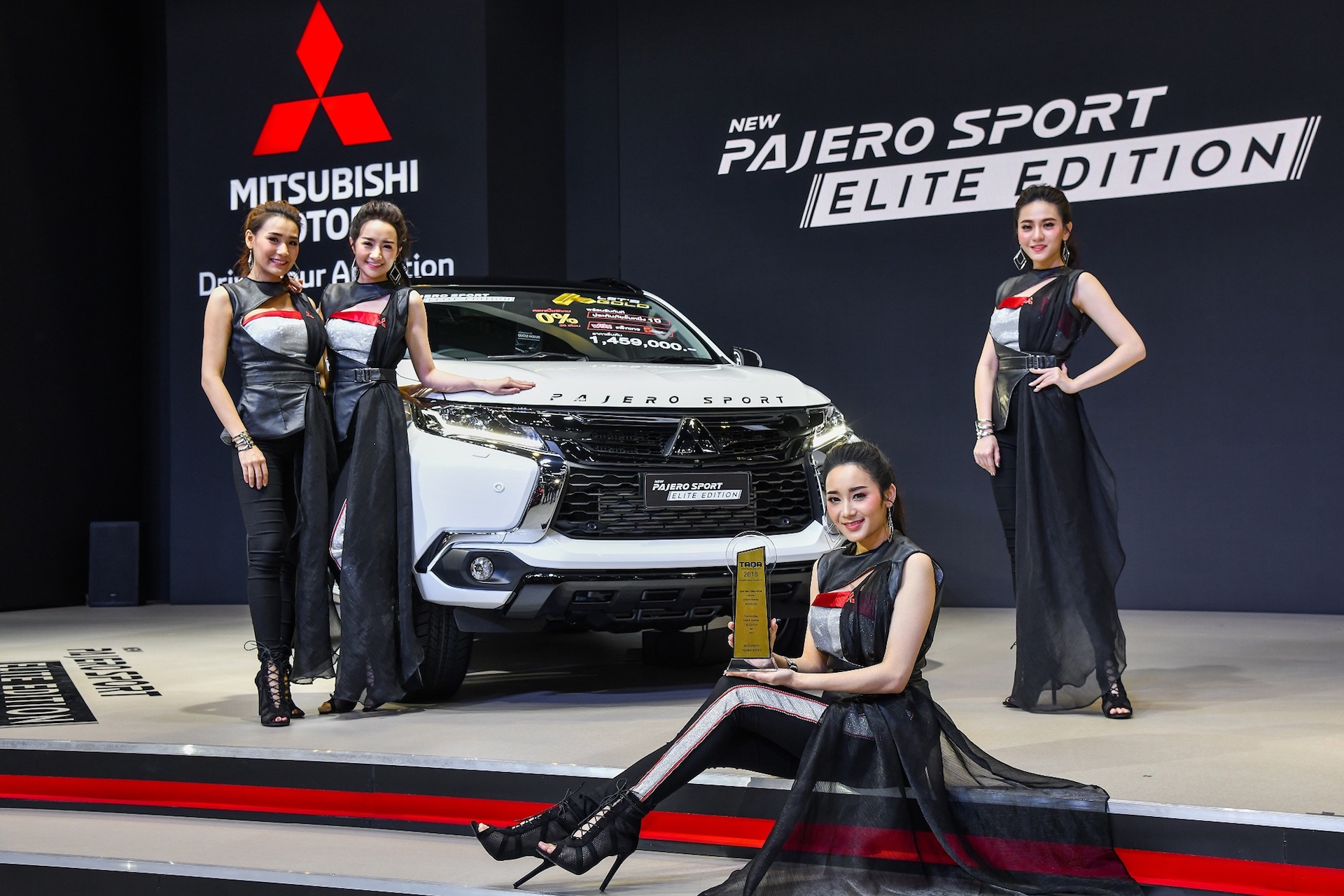
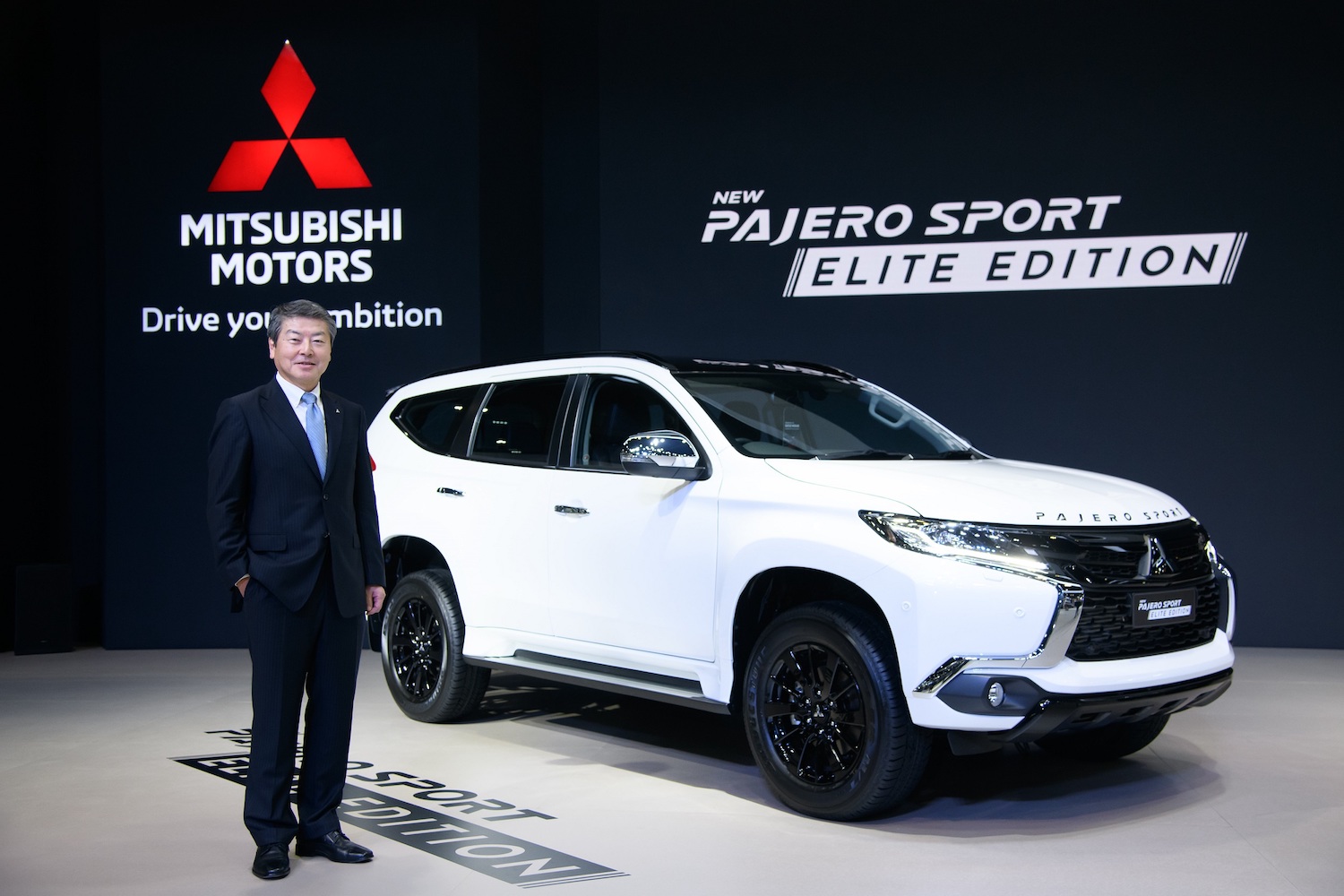
คำว่า “สมรรถนะ” หลายคนมักนึกถึงภาพของรถแข่งและนักขับมือฉมังที่มีความมุ่งมั่นคว้าชัยชนะ ผู้ที่ติดตามวงการมอเตอร์สปอร์ตอย่างใกล้ชิดย่อมจดจำชื่อนักแข่งชั้นนำอย่าง ฮิโรชิ มาซูโอกะ เคนจิโร่ ชิโนซูกะ ทอมมี มาคิเนน ริชาร์ด เบิร์นส์ (ผู้ล่วงลับ) พรสวรรค์ ศิริวัฒนกุล และ ตุลย์ สุวรรณรัตน์ สองนักขับชาวไทยอดีตเจ้าทะเลทรายรุ่น T2 รวมถึงนักแข่งชื่อดังอีกหลายคน นักแข่งเหล่านี้ต่างเคยขับรถมิตซูบิชิ พร้อมระบบขับเคลื่อน 4 ล้อ บุกตะลุยฟันฝ่าอุปสรรคบนเส้นทางทะเลทรายที่แห้งแล้งและป่าเขาที่ยากลำบากที่สุดเพื่อชัยชนะอันยิ่งใหญ่
แล้วการแข่งขันมอเตอร์สปอร์ตมีความเกี่ยวข้องกับรถอเนกประสงค์ขับเคลื่อน 4 ล้อยุคใหม่อย่าง มิตซูบิชิ ปาเจโร สปอร์ต อย่างไร คำตอบ คือ มีความเกี่ยวข้องกันอย่างแนบแน่นโดยเฉพาะในด้านสมรรถนะและความปลอดภัย
สมรรถนะที่มาพร้อมความปลอดภัยและความทนทาน คือ กุญแจสำคัญสู่ชัยชนะในการแข่งขัน แบบแรลลี่ ถือเป็นบททดสอบสำคัญในด้านสมรรถนะ ประสิทธิภาพ ความปลอดภัย ความแข็งแกร่ง และความทนทาน นวัตกรรมที่เกิดขึ้นจากการวิจัยและพัฒนาควบคู่กับการทดสอบเทคโนโลยีต่างๆ ในรถแข่งเหล่านี้ถูกต่อยอดด้านวิศวกรรมยานยนต์เพื่อถ่ายทอดสู่ยนตรกรรมที่ออกจำหน่ายในท้องตลาดอย่าง มิตซูบิชิ ปาเจโร สปอร์ต
จุดเริ่มต้นของสมรรถนะในแบบ มิตซูบิชิ มอเตอร์ส
มิตซูบิชิ มอเตอร์ส เป็นผู้นำด้านเทคโนโลยีระบบขับเคลื่อน 4 ล้อ ระบบการยึดเกาะ และสมรรถนะบนทางออฟโรดมาอย่างยาวนาน ต้นกำเนิดแห่งสมรรถนะและความปลอดภัยใน มิตซูบิชิ ปาเจโร สปอร์ต พัฒนาจากความเชี่ยวชาญอันยาวนานกว่า 80 ปี
จากจุดเริ่มต้นในปี พ.ศ. 2477 เมื่อรถต้นแบบอย่าง มิตซูบิชิ พีเอ็กซ์ 33 (Mitsubishi PX33) รถยนต์นั่งที่พัฒนาขึ้นเพื่อสนับสนุนงานของกองทัพ ที่เน้นด้านความแข็งแกร่ง ความอเนกประสงค์และต้องสามารถขับเคลื่อนไปได้บนทุกสภาพถนน จึงกล่าวได้ว่า พีเอ็กซ์ 33 เป็นรถซีดานรุ่นแรกของญี่ปุ่นที่ใช้ระบบขับเคลื่อน 4 ล้อแบบฟูลไทม์ ทั้งนี้ รถต้นแบบรุ่นดังกล่าวยังมีรุ่นย่อยที่ใช้เครื่องยนต์ดีเซลไดเรคอินเจคชั่นเป็นครั้งแรกของญี่ปุ่นภายใต้รหัส 445 เอดี (445AD) อย่างไรก็ตาม โครงการพีเอ็กซ์ 33 ยุติลงในอีก 3 ปีต่อมา
เทคโนโลยีจากโครงการดังกล่าวถูกเก็บบันทึกไว้อีกหลายทศวรรษ ก่อนที่บริษัทจะถูกเปลี่ยนชื่อเป็น มิตซูบิชิ มอเตอร์ส คอร์ปอเรชั่น ใช้เทคโนโลยีดังกล่าวในการพัฒนาผลิตภัณฑ์ใหม่ โดยเทคโนโลยีระบบขับเคลื่อน 4 ล้อรุ่นแรกถูกต่อยอดและนำเสนออีกครั้งที่งาน โตเกียว มอเตอร์โชว์ ในปี พ.ศ. 2516 ด้วยรถเปิดหลังคาที่ถือเป็นต้นกำเนิดแห่งยนตรกรรมอันเป็นตำนานอย่าง มิตซูบิชิ ปาเจโร หลังจากนั้น รถต้นแบบรุ่นที่สองได้รับการจัดแสดงอีกครั้งในปี พ.ศ. 2521 และเริ่มต้นการผลิตเพื่อจำหน่ายจริงในปี พ.ศ. 2525
เทคโนโลยีแห่งชัยชนะในสนามแข่ง
มิตซูบิชิ ปาเจโร พิสูจน์แล้วถึงความสำเร็จทั้งในด้านยอดจำหน่ายและในสนามแข่ง ด้วยสมรรถนะที่ยอดเยี่ยมของ มิตซูบิชิ ปาเจโร ถูกนำไปทดสอบในการแข่งขันมอเตอร์สปอร์ตระดับมืออาชีพ โดยการร่วมแข่งขันแรลลี่ข้ามประเทศที่หฤโหดที่สุดในโลกเป็นครั้งแรกนั้น มิตซูบิชิ ปาเจโร ที่ผ่านการปรับแต่งเพียงเล็กน้อยจบการแข่งขันระยะทาง 10,000 กิโลเมตรในอันดับที่ 11 ประเภทโอเวอร์ออล จากรถที่เข้าร่วมแข่งขันทั้งหมดกว่า 100 คัน
มิตซูบิชิ มอเตอร์ส มุ่งมั่นทุ่มเทเพื่อการแข่งขันอย่างเต็มตัวโดยได้ปรับแต่ง มิตซูบิชิ ปาเจโร ให้มีศักยภาพสูงขึ้นทั้งในด้านความปลอดภัย ความทนทาน และสมรรถนะการขับขี่ในภาพรวม ก่อนจะคว้าชัยชนะอย่างรวดเร็วในประเภทโอเวอร์ออลในการลงแข่งขันครั้งที่ 3 ในปี พ.ศ. 2528
มิตซูบิชิ มอเตอร์ส ลงแข่งขันในรายการดังกล่าวอย่างต่อเนื่องเป็นเวลา 25 ปี โดยกวาดชัยชนะทั้งหมด 12 ครั้งจากทั้งหมด 26 ครั้งที่เข้าร่วมการแข่งขัน (คว้าชัยชนะ 7 ครั้งติดต่อกันในปี พ.ศ. 2544 – 2550) และด้วยสถิติอันน่าทึ่งนี้ทำให้ มิตซูบิชิ ปาเจโร ได้รับฉายาว่าเป็น “ราชาแห่งทะเลทราย” อีกทั้งยังได้รับการบันทึกจากกินเนสส์ เวิลด์ เรคคอร์ด ว่าเป็น “บริษัทผู้ผลิตที่คว้าชัยชนะการแข่งขันดาการ์แรลลี่มากที่สุด”
สมรรถนะแห่งชัยชนะทั้งบนถนนจริงและในสนามแข่ง
หนึ่งในคุณสมบัติที่ยอดเยี่ยมที่สุดที่ทำให้ มิตซูบิชิ ปาเจโร ทรงพลังและเปี่ยมด้วยสมรรถนะ คือระบบขับเคลื่อน 4 ล้อ ทั้งนี้ข้อมูลทางเทคนิคและองค์ความรู้ที่ได้จากสนามแข่งได้รับการถ่ายทอดสู่การผลิตรถยนต์ของ มิตซูบิชิ มอเตอร์ส ในเวลาต่อมา เพื่อให้ลูกค้าได้ใช้ประโยชน์จากเทคโนโลยีที่ก้าวล้ำ อย่างไรก็ตาม ความสะดวกสบายและความหรูหราก็มีความสำคัญเช่นกัน บางคนอาจคาดไม่ถึงว่า มิตซูบิชิ ปาเจโร สปอร์ต จะมีระบบขับเคลื่อน 4 ล้อแบบเดียวกับรถที่ใช้ในการแข่งขัน ซึ่งแตกต่างและมีลักษณะการใช้งานที่ไม่เหมาะกับการในชีวิตประจำวัน
มิตซูบิชิ มอเตอร์ส ใช้ระบบคอมพิวเตอร์และเทคโนโลยีอิเลกทรอนิกในการปรับจูนระบบสมรรถนะเพื่อรองรับการใช้งานในชีวิตประจำวัน นอกจากนี้ยังปรับตั้งโปรแกรมระบบขับเคลื่อนเพื่อให้เหมาะสมกับการขับขี่ในชีวิตประจำวันมากยิ่งขึ้น ทั้งเส้นทางในเมือง ถนนทางไกล หรือ เส้นทางลูกรังในชนบท
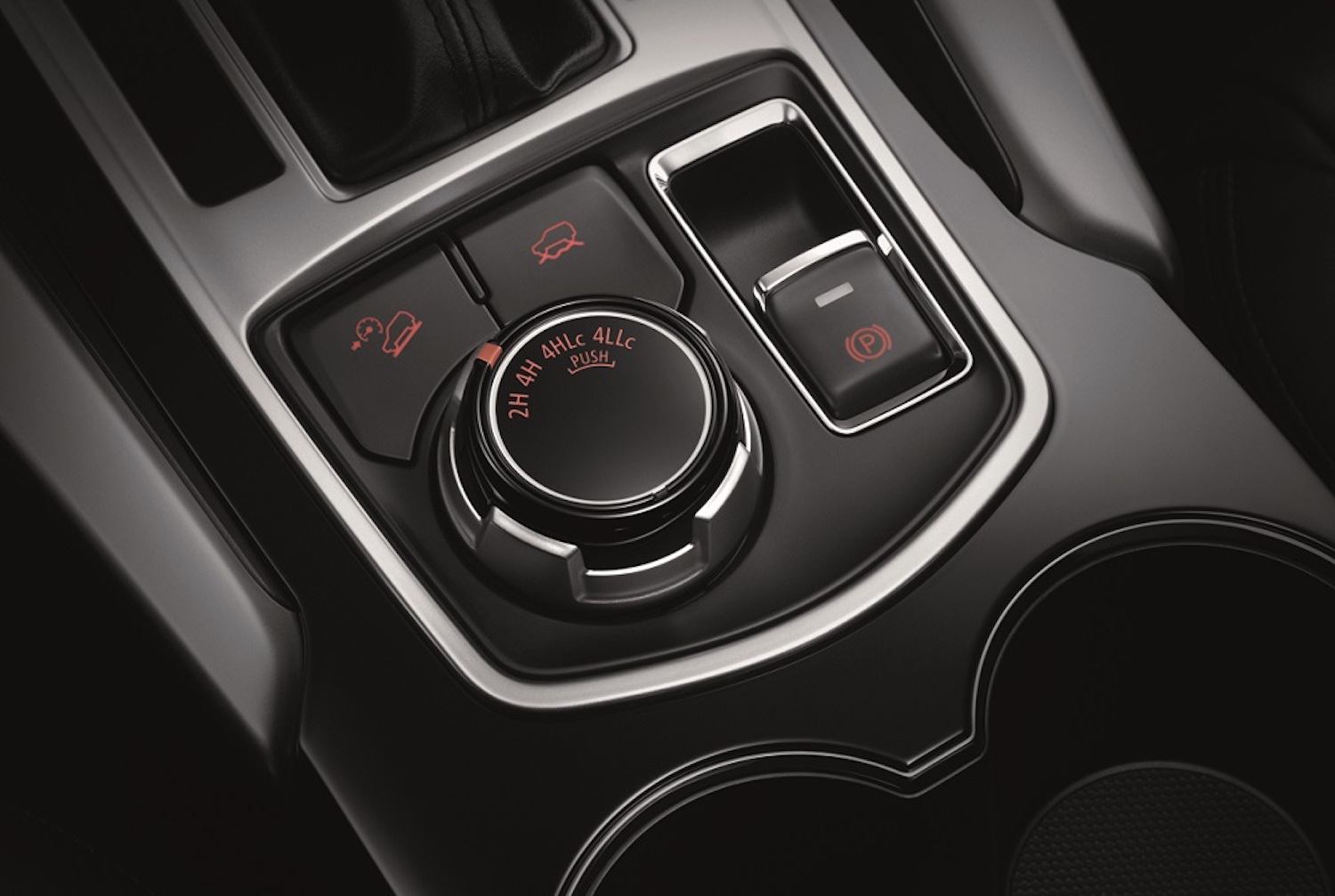
ระบบขับเคลื่อน 4 ล้อ Super Select 4WD-II ของ มิตซูบิชิ มอเตอร์ส ซึ่งเป็นการผสมผสานระบบขับเคลื่อนสี่ล้อแบบฟูลไทม์และพาร์ทไทม์เข้าไว้ด้วยกัน ใช้ตัวควบคุมไฟฟ้าที่ช่วยปรับเปลี่ยนโหมดการขับขี่แทนที่การควบคุมด้วยมือ มีโหมดการขับขี่ 4 รูปแบบ ดังนี้
นอกจากนี้ ระบบ Super Select 4WD-II ยังมาพร้อมโหมดออฟโรด (Off-Road) ที่ยกระดับการยึดเกาะผ่านการปรับตั้งค่าในโหมดออฟโรดหลากหลายรูปแบบ ไม่ว่าจะเป็น Gravel, Mud/Snow, Sand หรือ Rock แต่ละโหมดมีการทำงานของเครื่องยนต์และเบรกที่แตกต่างกันเพื่อเพิ่มสมรรถนะและการยึดเกาะสูงสุด โหมดที่ถูกเลือกจะปรากฏขึ้นบนหน้าจอแสดงผล นอกจากนี้ คุณสมบัติที่โดดเด่นของระบบขับเคลื่อน 4 ล้อยังรวมถึงระบบล็อกเฟืองท้าย (Rear Differential Lock) ที่ทำงานประสานกับตัวล็อกเฟืองท้ายกลางซึ่งเป็นระบบที่ติดตั้งอยู่ในรถเอสยูวีไม่กี่รุ่นในท้องตลาด เมื่อระบบนี้ทำงานจะล็อกเฟืองท้าย ทำให้มีการกระจายพละกำลัง 50-50 ไปสู่ล้อหลัง ถือเป็นระบบที่มีความสำคัญต่อการขับขี่บนทางออฟโรดที่มีความท้าทายสูง
เพื่อสร้างความมั่นในว่าจะมีพละกำลังมากเพียงพอในทุกสถานการณ์ มิตซูบิชิ ปาเจโร สปอร์ต ขับเคลื่อนด้วยเครื่องยนต์รหัส 4N15 ติดตั้งเทอร์โบแปรผันที่มีน้ำหนักเบากว่าเพื่อการตอบสนองที่รวดเร็วยิ่งขึ้นอัตราเร่งและพละกำลังจึงพร้อมใช้งานได้ดังใจไม่ว่าจะเป็นการฟันฝ่าจราจรในเมืองหรือการขับขี่บนถนนทางไกลและแม้กระทั่งบนเส้นทางออฟโรด นอกจากนี้ยังเพิ่มความประหยัดน้ำมัน พร้อมกับลดเสียงรบกวน แรงสั่นสะเทือน และแรงสะท้าน (NVH) ลงอีกด้วย
เครื่องยนต์ดีเซลบล็อกอลูมิเนียม VG Turbo ขนาด 4 สูบแถวเรียง ความจุ 2.4 ลิตร MIVEC มีพละกำลัง 181 แรงม้าที่ 3,500 รอบต่อนาที แรงบิด 430 นิวตันเมตรที่ 2,500 รอบต่อนาที ซึ่งมีอัตราส่วนพละกำลังต่อความจุสูงที่สุดในระดับเดียวกันอยู่ที่ 74 แรงม้าต่อลิตร และ 176 นิวตันเมตรต่อลิตร
พละกำลังจากเครื่องยนต์ 4N15 ถูกถ่ายทอดลงพื้นด้วยระบบขับเคลื่อนล้อหลังเป็นหลักผ่านระบบเกียร์อัตโนมัติ 8 สปีด อัตราทดเกียร์ที่มากขึ้นทำให้พละกำลังของเครื่องยนต์ถูกใช้งานได้อย่างมีประสิทธิภาพกว่าเดิม มอบอัตราเร่งที่ไหลลื่นและการบริโภคน้ำมันที่ต่ำ นอกจากนี้ยังมีระบบ INC (Idling Neutral Control) ซึ่งช่วยลดการสูญเสียพลังงานภายในตัวเครื่องยนต์อันเกิดจากแรงฉุดของทอร์กคอนเวอร์เตอร์เมื่อตัวรถหยุดนิ่งและเกียร์อยู่ในตำแหน่ง D จึงช่วยเพิ่มความประหยัดน้ำมันอีกทางหนึ่ง
มิตซูบิชิ ปาเจโร สปอร์ต ยังมีระบบความปลอดภัยที่ครบครันเพื่อรองรับสมรรถนะที่เหนือชั้น เมื่อเทียบกับปาเจโรตัวแข่ง ระบบความปลอดภัยเหล่านี้ถูกพัฒนาให้เป็นเหมือนผู้ช่วยผู้ขับขี่โดยไม่ส่งผลต่อประสบการณ์การขับขี่ในภาพรวม เทคโนโลยีความปลอดภัยเชิงรุกเพื่อการป้องกันมีดังนี้
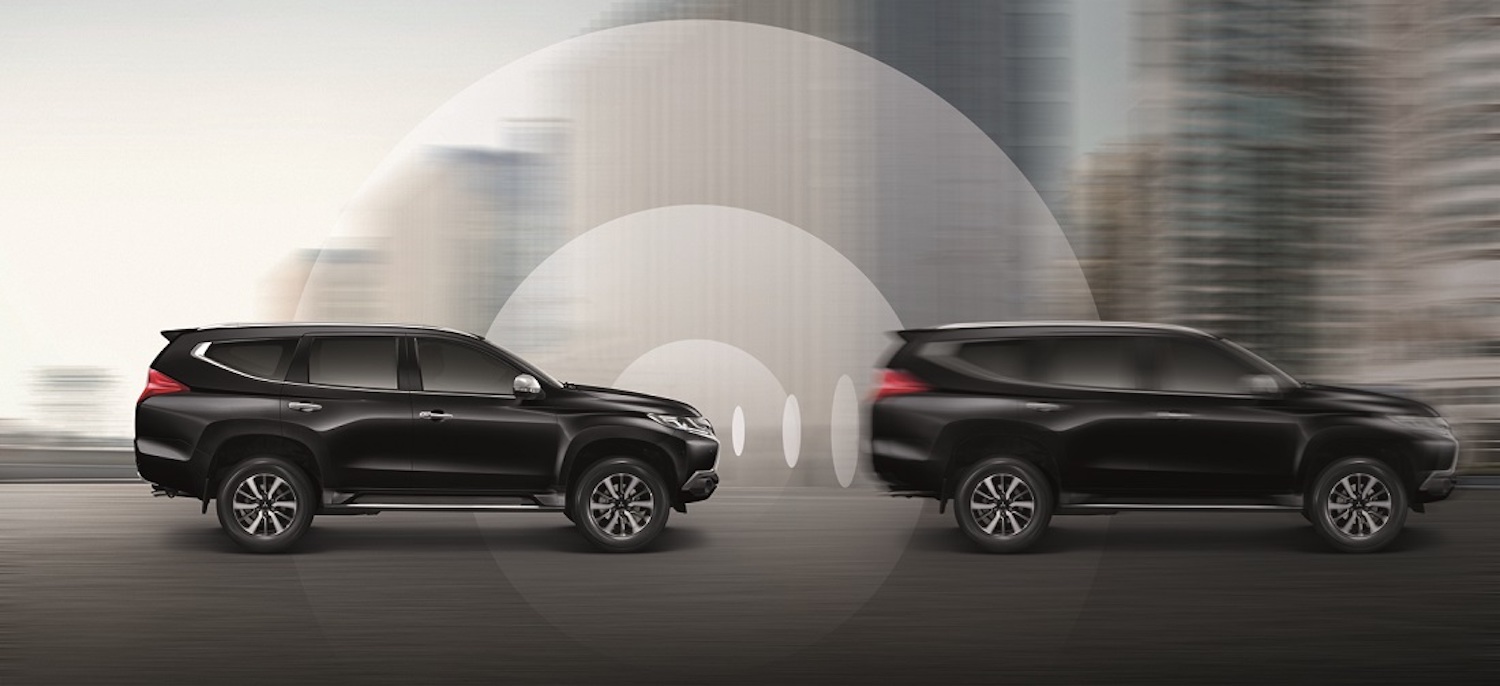
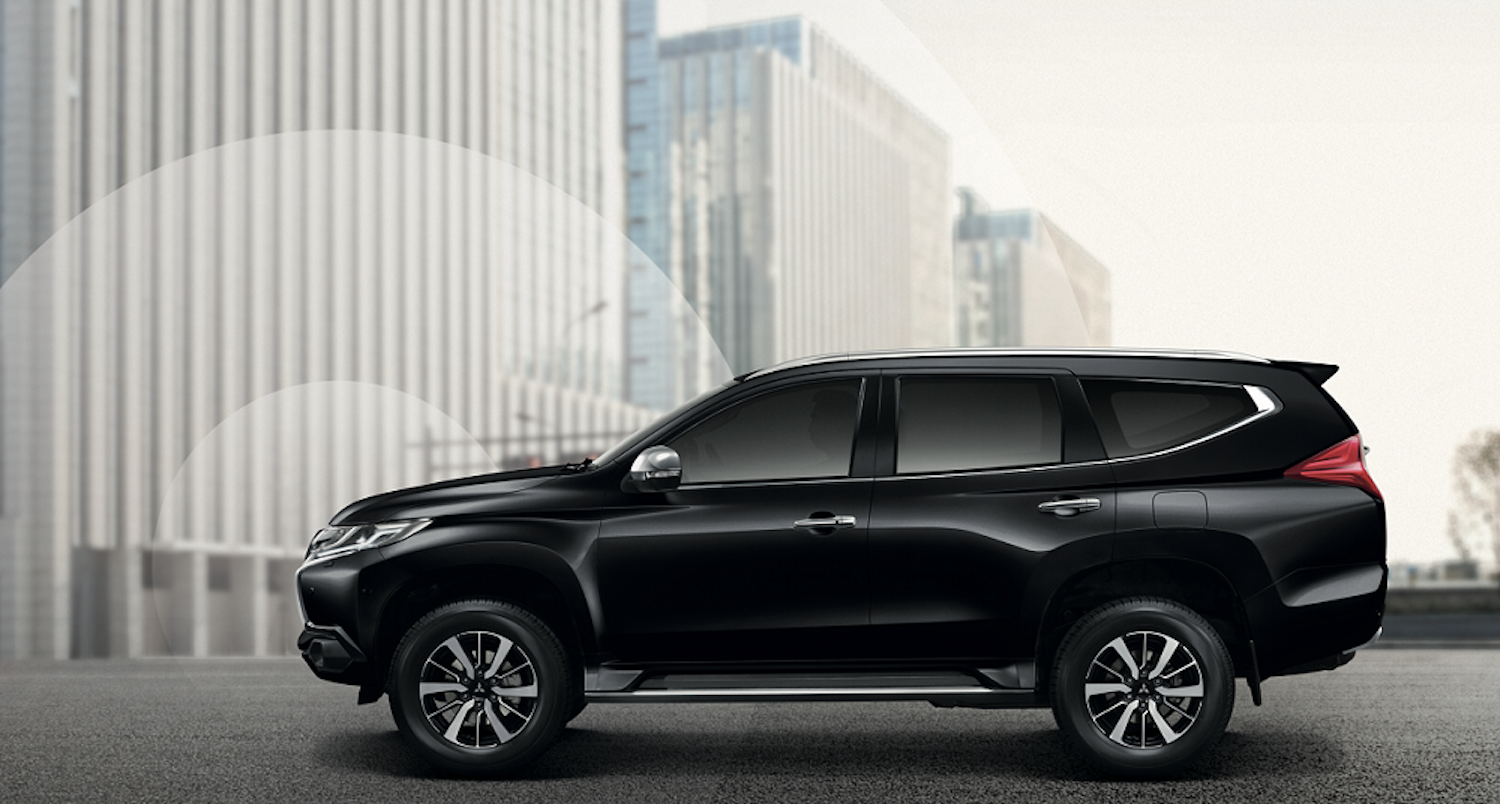
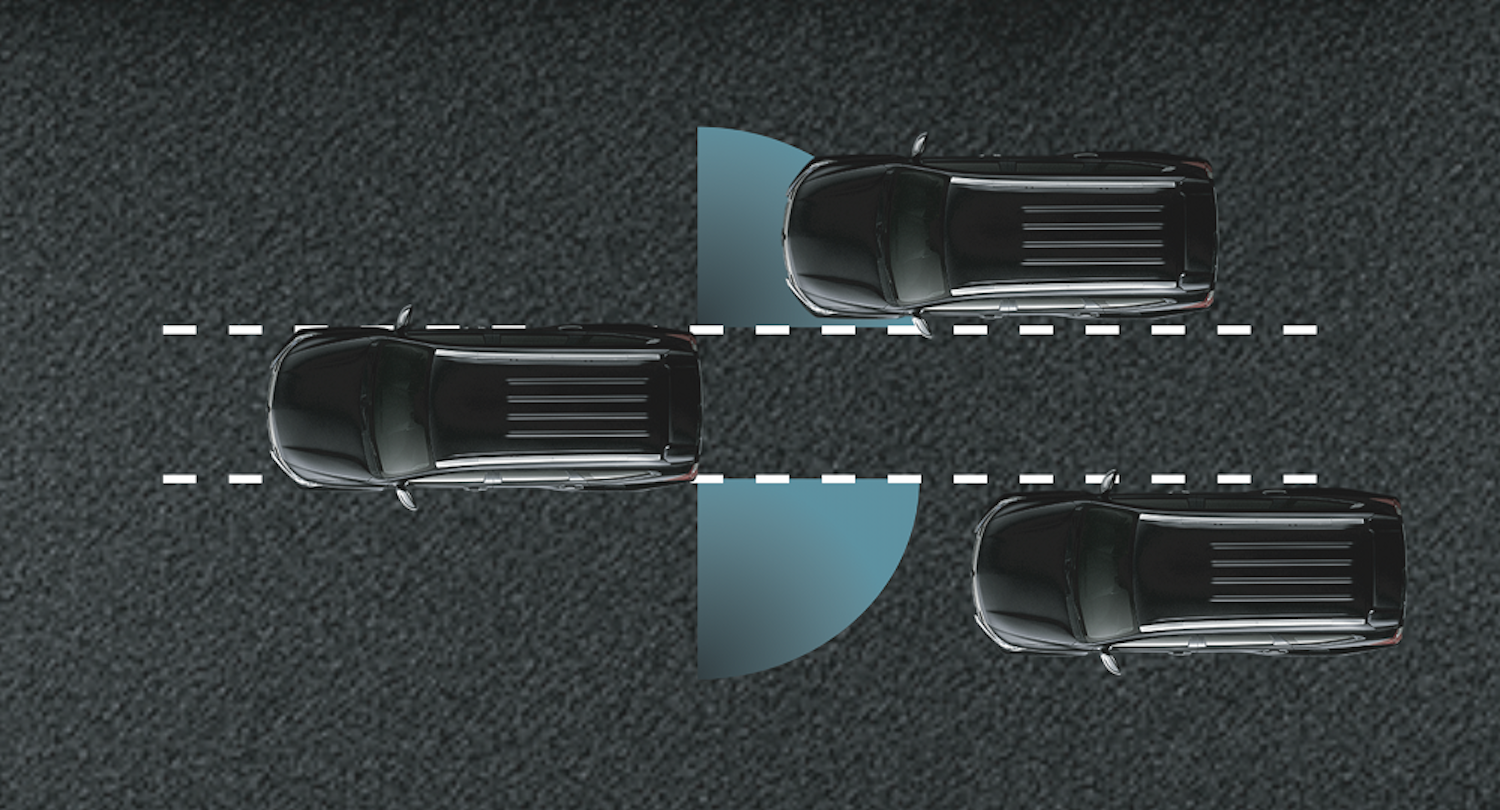
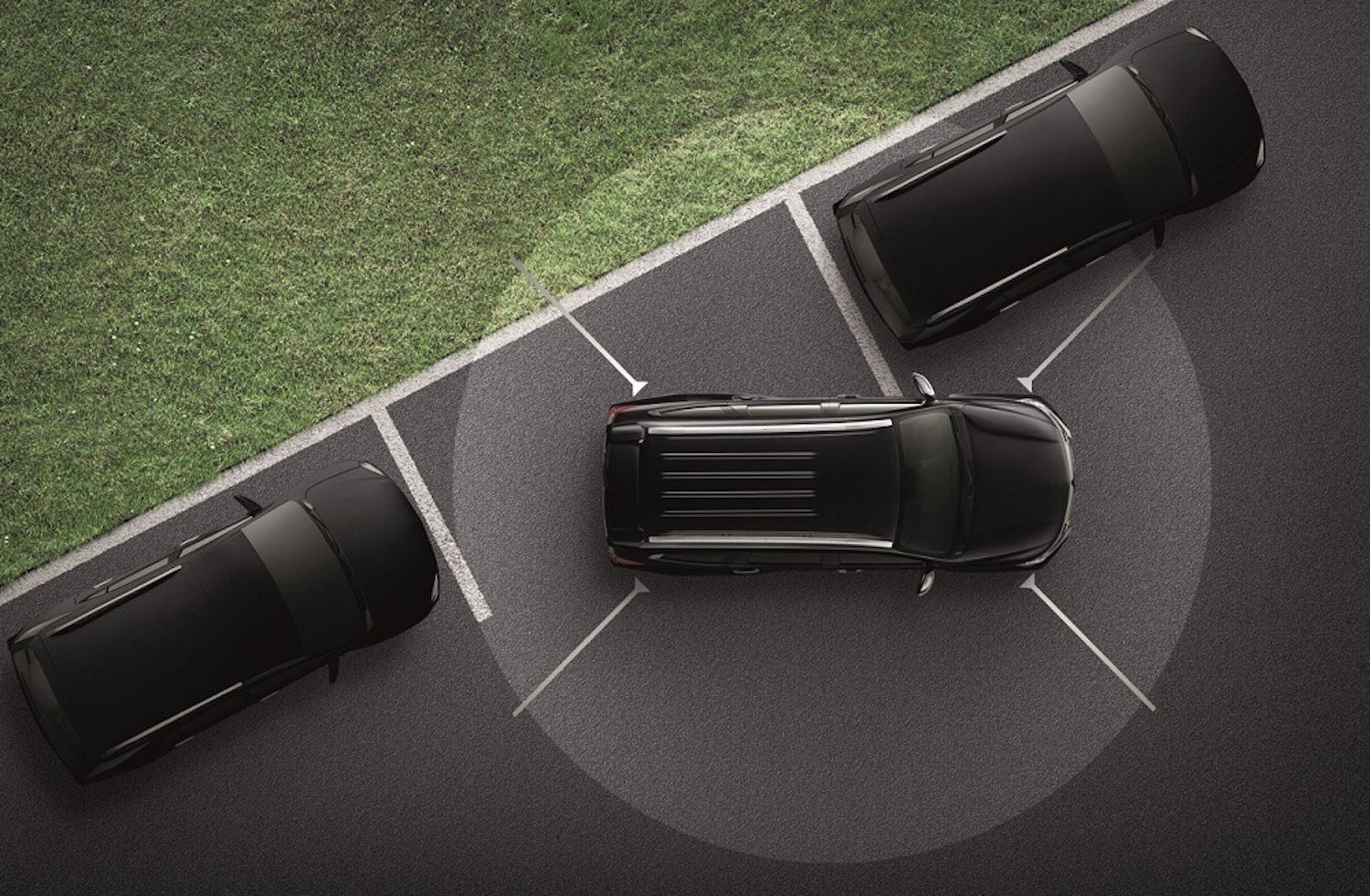
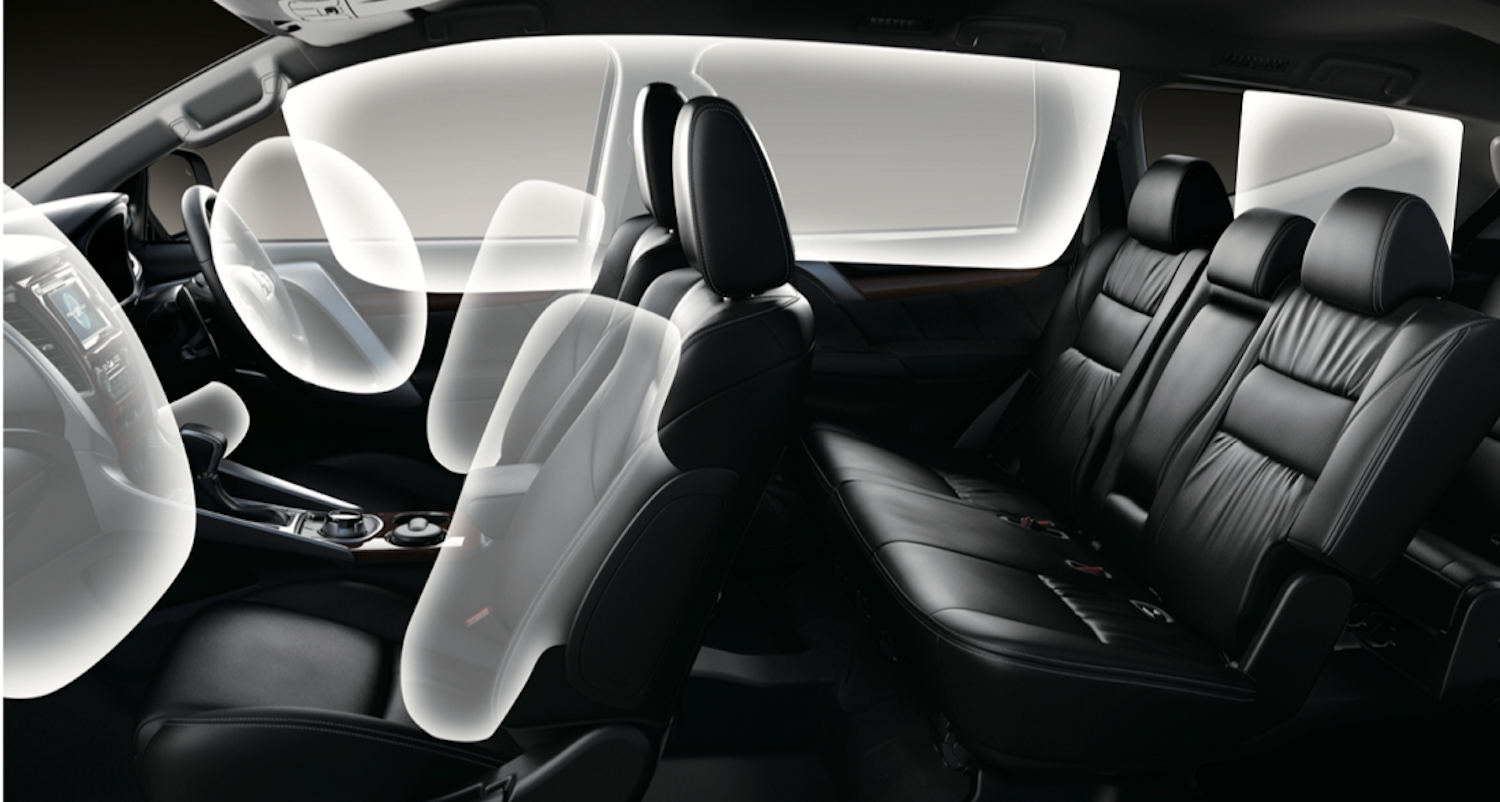
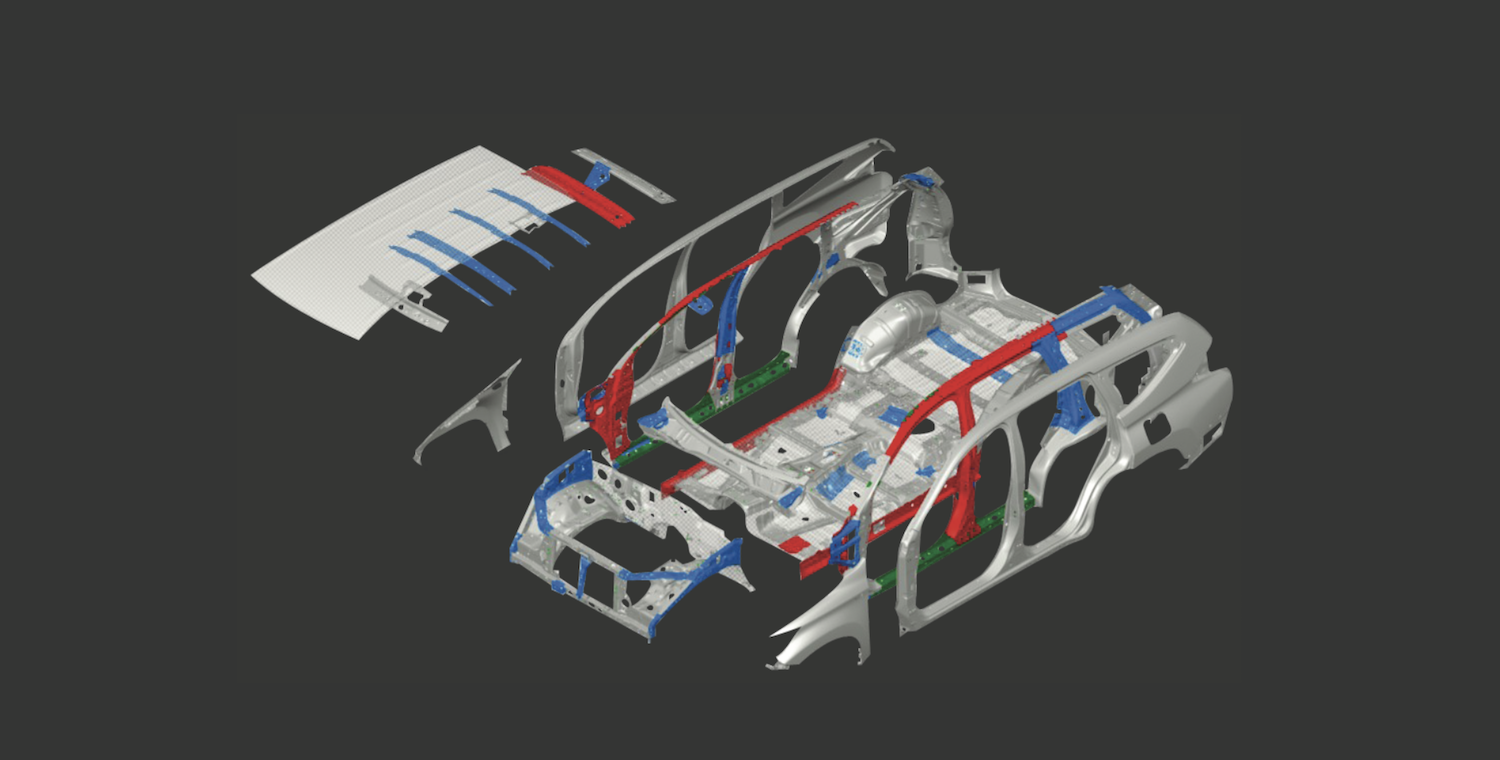
สำหรับเทคโนโลยีความปลอดภัยเพื่อการปกป้องประกอบด้วยถุงลมนิรภัย 7 ตำแหน่ง ได้แก่
ถุงลมนิรภัยคู่หน้าและด้านข้างสำหรับผู้ขับขี่และผู้โดยสาร ถุงลมนิรภัยบริเวณหัวเข่าของผู้ขับขี่ และม่านนิรภัยที่ปกป้องครอบคลุมเบาะแถวที่สาม นอกจากนี้ ยังมีโครงสร้างตัวถังนิรภัยเหล็กกล้า (RISE) ที่ผลิตขึ้นจากเหล็กที่มีความแข็งแรงและมีแรงดึงสูง เพื่อสร้างคุณสมบัติการดูดซับแรงกระแทกจากทุกทิศทาง ซึ่งมีคุณสมบัติคล้ายกับโครงเหล็กนิรภัยที่ใช้ในรถแข่งของ
มิตซูบิชิ มอเตอร์ส
ขณะเดียวกัน มิตซูบิชิ ปาเจโร สปอร์ต ยังมีคุณสมบัติเพิ่มเติมที่นอกเหนือจากด้านสมรรถนะและความปลอดภัย ด้วยการเพิ่มความสะดวกสบายและความหรูหราเพื่อตอบสนองกลุ่มผู้ขับขี่ทั่วไป
มิตซูบิชิ ปาเจโร สปอร์ต มีฟังก์ชั่นที่โดดเด่นกว่ารถเอสยูวีทีได้รับความนิยมทั่วไป อาทิ ระบบ ล็อกความเร็วแบบแปรผันอัตโนมัติ (Adaptive Cruise Control) ซึ่งรักษาระยะห่างจากรถคันหน้า เมื่อรถคันหน้าชะลอความเร็วหรือหยุดรถ ระบบนี้จะช่วยรักษาระยะห่างที่ปลอดภัยไว้ได้ ที่นอกจากนี้ยังมีระบบความอำนวยความสะดวกและปลอดภัยอัจฉริยะ (ETACS) ที่ควบคุมอุปกรณ์ไฟฟ้าภายในตัวรถ ทั้งใบปัดน้ำฝนปรับความเร็วอัตโนมัติ ระบบหน่วงเวลาเปิด-ปิดระบบไฟฟ้า ระบบไฟหน้าอัตโนมัติ ระบบสัญญาณไฟเลี้ยวเพื่อเปลี่ยนเลน ระบบเตือนลืมปิดไฟหรี่
ระบบสัญญาณไฟกระพริบเมื่อหยุดรถฉุกเฉิน ระบบล็อกประตูรถอัตโนมัติตามความเร็ว ระบบไฟนำทางหลังดับเครื่องยนต์และเมื่อกดรีโมท ระบบกุญแจนิรภัยและกุญแจอัจฉริยะ
ภายในห้องโดยสารของ มิตซูบิชิ ปาเจโร สปอร์ต มอบความหรูหราและอเนกประสงค์ยิ่งขึ้น ด้วยแผงบุนุ่มด้านข้าง มาตรวัดแบบ High Contrast และระบบฟอกอากาศภายในห้องโดยสาร อุปกรณ์อำนวยความสะดวกอื่นๆ ทั้งช่องชาร์จไฟฟ้า 220V AC ช่องเก็บสมาร์ทโฟนสำหรับผู้ขับขี่และผู้โดยสาร เบรกมือไฟฟ้า ช่องแอร์ที่ได้รับการปรับปรุงใหม่สำหรับผู้โดยสารแถวที่ 2 และ 3 ตลอดจนระบบกุญแจอัจฉริยะและปุ่มสตาร์ท มิตซูบิชิ ปาเจโร สปอร์ต มีเนื้อที่บรรทุกสัมภาระที่กว้างขวางที่สุดรุ่นหนึ่งในเซ็กเมนท์เดียวกัน
เพิ่มความหรูหราและสะดวกสบายใน มิตซูบิชิ ปาเจโร สปอร์ต มากยิ่งขึ้นด้วยระบบปรับอากาศแบบแยกส่วนดูอัลโซน พวงมาลัยแบบปรับขึ้นลงและเข้าออกได้ เบาะนั่งคู่หน้าสำหรับผู้ขับขี่และผู้โดยสารแบบปรับไฟฟ้า 8 ทิศทาง หน้าจอบนเพดานสำหรับผู้โดยสารตอนหลัง กระจกมองหลังตัดแสงอัตโนมัติ และระบบปรับอากาศด้านหลัง ปาเจโร สปอร์ต ยังได้รับการออกแบบตามหลักการยศาสตร์เพื่อรองรับการใช้งานที่สะดวกสบายด้วย T-Shaped High Console ที่จัดวางทุกฟังก์ชั่นให้อยู่ในตำแหน่งที่สะดวกต่อการใช้งานรวมถึงหน้าจอทัชสกรีน 7 นิ้วและระบบนำทางให้ผู้ขับขี่ควบคุมได้ง่ายดาย พวงมาลัยมัลติฟังก์ชั่นมีสวิตช์ควบคุมระบบล็อกความเร็วแบบแปรผันอัตโนมัติ แพดเดิลชิฟท์สำหรับเปลี่ยนเกียร์และสวิตช์ควบคุมเครื่องเสียง
ทั้งสมรรถนะ ความปลอดภัย และเทคโนโลยีถูกถ่ายทอดผ่านเอกลักษณ์การออกแบบ “Dynamic Shield” ของ มิตซูบิชิ มอเตอร์ส ไม่เพียงมีตัวถังที่ใหญ่ แข็งแกร่ง และบึกบึน แต่งานออกแบบยังสะท้อนแนวคิด “รูปลักษณ์ที่สอดคล้องกับการใช้งาน” ผสานการปกป้องและสมรรถนะการขับขี่เข้าไว้ด้วยกันภายใต้รูปลักษณ์ที่โฉบเฉี่ยว
มิตซูบิชิ ปาเจโร สปอร์ต คือหนึ่งในตัวอย่างที่สมบูรณ์แบบของการถ่ายทอดความสำเร็จจากสนามแข่งสู่ยานยนต์แห่งชัยชนะ ด้วยการผสานสปิริตแห่งการผจญภัยเข้ากับความมุ่งมั่นท้าทายของการออกแบบและเทคโนโลยี มิตซูบิชิ ปาเจโร สปอร์ต มาพร้อมกับดีไซน์ที่โดดเด่นและสมรรถนะที่เหนือชั้น เพื่อสร้างแรงบันดาลใจให้แก่ลูกค้าและมุ่งสู่ทุกความสำเร็จในชีวิต สอดคล้องกับกลยุทธ์แบรนด์ระดับโลก “Drive your Ambition” ของ มิตซูบิชิ มอเตอร์ส
>>>>>>>>>>><<<<<<<<<<<<
Performance Meets Safety in Mitsubishi Pajero Sport

The word ‘performance’ reminds us images of men in racing overalls driving bespoke vehicles racing to the all-important win. Keen motorsports enthusiasts will also remember names like Hiroshi Masuoka, Kenjiro Shinozuka, Tommi Makinen, the late Richard Burns, and two famous Thai drivers, Pornsawan Siriwattanakul and Tull Suwannarat, former cross-country champions in T2 category, to name a few. These drivers have used four-wheel-drive Mitsubishis over the roughest deserts and toughest forests to beat the odds and achieve victories.
But, what does motorsports have to do with a modern-day four-wheel-drive SUV like the Mitsubishi Pajero Sport? The fact is, it has plenty to do with it, especially in the areas of performance and safety.
Performance, matched with safety and durability, is what win races. No other branches of motorsports test a vehicle’s performance, efficiency, safety, strength and durability like rallying. Innovations generated through research-and-development and technologies that are tested in racing vehicles are subsequently engineered for road-going vehicles like the Mitsubishi Pajero Sport.
The beginning of Mitsubishi Motors Performance
Mitsubishi Motors’ leadership in four-wheel-drive technology, traction systems and off-road performance is not new. The root of Mitsubishi Pajero Sport’s performance and safety date back to more than 80 years.
It all started in 1934 when the Mitsubishi PX33 prototype was developed. A passenger car originally developed for use by the military, it had had to be tough, versatile and be able to traverse over all sorts of terrains. Therefore, the PX33 became the first Japanese sedan with full-time four-wheel-drive. Some versions of this prototype were also fitted with Japan’s first direct-injection diesel engine, coded 445AD. However, the entire PX33 project was halted three years later.
The technology was kept under wraps for many decades before the company, now known as Mitsubishi Motors Corporation, began to utilize it for the development of a new product line. The pioneering four-wheel-drive technology re-emerged at the Tokyo Motor Show in 1973, this time under an open-top vehicle known as the Mitsubishi Pajero. And a legend is born. A second prototype was shown in 1978, and production started in 1982.
Race-winning technology
Mitsubishi Pajero proved to be a success on the roads and off it. Its overall performance was so outstanding that it was soon entered into professional competition and races. In its first year of participation in the world’s toughest cross-country desert rally, the lightly-modified Mitsubishi Pajero finished the 10,000-kilometer race 11th overall, out of more than 100 participants.
Encouraged, Mitsubishi Motors toughened up the Mitsubishi Pajero for safety and durability and improved its overall performance. The results came quickly. In only its third outing, the Mitsubishi Pajero took overall victory in the 1985 race.
Mitsubishi Motors spent the next 25 years in the sport, garnering a total of 12 overall wins out of 26 entries (seven of the wins were consecutive victories from 2001 – 2007). These statistics earned the Mitsubishi Pajero the nickname ‘King of the Desert’ and more importantly, Guinness World Records recognized the achievement as the ‘Most Dakar Rally Wins by a Manufacturer’.
Winning performance on and off the road
One of the strongest qualities contributing to the Pajero’s mighty performance is its four-wheel-drive system. Technical data and results from races are transferred to Mitsubishi Motors road-going vehicles so customers benefit from the advanced technologies. However, in a world of luxury, finesse and comfort, one cannot expect a vehicle like the Mitsubishi Pajero Sport to have a race-spec four-wheel-drive drivetrain as it will be too unrefined, rough and not suited for daily use.
Instead, Mitsubishi Motors used computer and electronic technology to refine performance systems for everyday use. Additionally, the automaker has also programmed the drivetrain to make it more relevant for everyday use, whether on urban roads, highways or jungle tracks.
Known as the Super Select 4WD-II drivetrain, this is like a combination of full-time 4WD and part-time 4WD. It now uses an electric actuator to facilitate switching between drive modes instead of employing manual control. The system features four drive modes:
Additionally, the Super Select 4WD-II also comes with Off-Road Modes that enhances traction via various setting in off-road modes. They include Gravel, Mud/Snow, Sand or Rock settings. Each setting results in different engine output and braking to optimize performance and traction. The selected mode will be displayed on the multi-information display. The final weapon in its four-wheel-drive armory is the Rear Differential Lock that works in conjunction with the Center Differential Lock – a feature not many SUVs have. When engaged, the system will lock the rear differential, resulting in a consistent 50-50 power distribution to the rear wheels. This is an important feature in really tough off-road conditions.
To ensure there is enough power, the Mitsubishi Pajero Sport uses the 4N15 engine that features a lighter turbo for faster response. As a result, acceleration and power is always available on demand, whether it is in start-stop city traffic or on highways and even off-road. This also results in better fuel economy and reduced noise, vibration and harshness (NVH).
The inline 4-cylinder 2.4L MIVEC VG Turbo Diesel with aluminum block engine produces 181 ps at 3,500 rpm and 430 Nm at 2,500 rpm. It has the highest specific output of 74 ps/L and 176 Nm/L in its class – higher outputs per liter of capacity.
Power from the 4N15 is sent primarily to the rear wheels via an Eight-Speed Automatic Transmission. The presence of more ratios means the engine’s power is used more effectively for smoother acceleration and lower fuel consumption. It also features INC (Idling Neutral Control) which reduces internal energy losses caused by torque converter drag when the vehicle is stationary with the gear selector in ‘D’, improving fuel consumption.
The Mitsubishi Pajero Sport also has a range of safety features to match its performance. Compared to the race Pajero, these are more finely-tuned systems that work in the background without intruding into the overall driving experience. The active safety technologies include:
For passive safety, there are seven airbags including front and side airbags for the driver and passenger, driver’s knee airbag, and curtain airbags up to third-row seats. To protect its occupants, and similar to a roll-cage used in Mitsubishi Motors’ racing vehicles (albeit completely hidden) is the Reinforced Impact Safety Evolution (RISE) body system. It uses strong, high-tensile steel to create energy-absorbing elements against impact from all directions.
Unlike its racing brethren with a sole focus on performance and safety, the Mitsubishi Pajero Sport will be driven by a completely different group of drivers who will also require driving conveniences and luxury.
To ensure the Mitsubishi Pajero Sport has all the qualities of a favorite SUV, it comes with radar-guided Adaptive Cruise Control system that maintains a preset distance to the vehicle in front. If the vehicle in front slows down or stops, ACC will follow, maintaining a safe distance. There is also the Electronic Time and Alarm Control System (ETACS) – a system that controls all electrical components in the vehicle, including the speed-sensing front wipers, power window timer, automatic headlamps, assisted signals for lane changes, low light warning, emergency stop signal, speed-sensing automatic door locks, coming home and welcome lights, vehicle immobilizer and keyless operation system.
On the luxury front, the interior of the Mitsubishi Pajero Sport comes with console side garnish soft pad, a high contrast combination meter and a Nanoe air purifier, a 220V AC power supply, smartphone pocket for driver and passenger, electronic parking brake, improved air outlet vents for the second and third row seats, keyless operation and engine start and the most spacious cargo space in its category.
Other luxuries include dual-zone climate control, tilt-and-reach adjustable steering wheel, eight-way power-adjustable front seats for driver and passenger, roof-mounted monitor for rear passengers, auto-dimming rearview mirrors and rear climate control. Ergonomics has also been updated with the T-Shaped High Console that puts all controls within easy reach of the driver including the seven-inch touchscreen entertainment and navigation console. The multi-function steering wheel houses controls for adaptive cruise control, paddle shift for manual control of gear changes and audio controls.
All the performance, safety and technology are presented using Mitsubishi Motors’ latest design language, known as ‘Dynamic Shield’. The ‘form follows function’ ethos has resulted in a design that looks big, tough and rugged while combining protection, performance and aesthetics in a functional front-end.
The Mitsubishi Pajero Sport is one of the perfect examples of how winning races can help develop winning products. By combining an adventurous spirit with progressive elements that challenge design and technological frontiers, the Mitsubishi Pajero Sport’s bold design and superior performance is developed to inspire and motivate customers to keep on driving towards lifelong progress. This is in line with the automaker’s global brand strategy ‘Drive your Ambition’.
autofulltravel.com
facebook.com/autofulltravel/